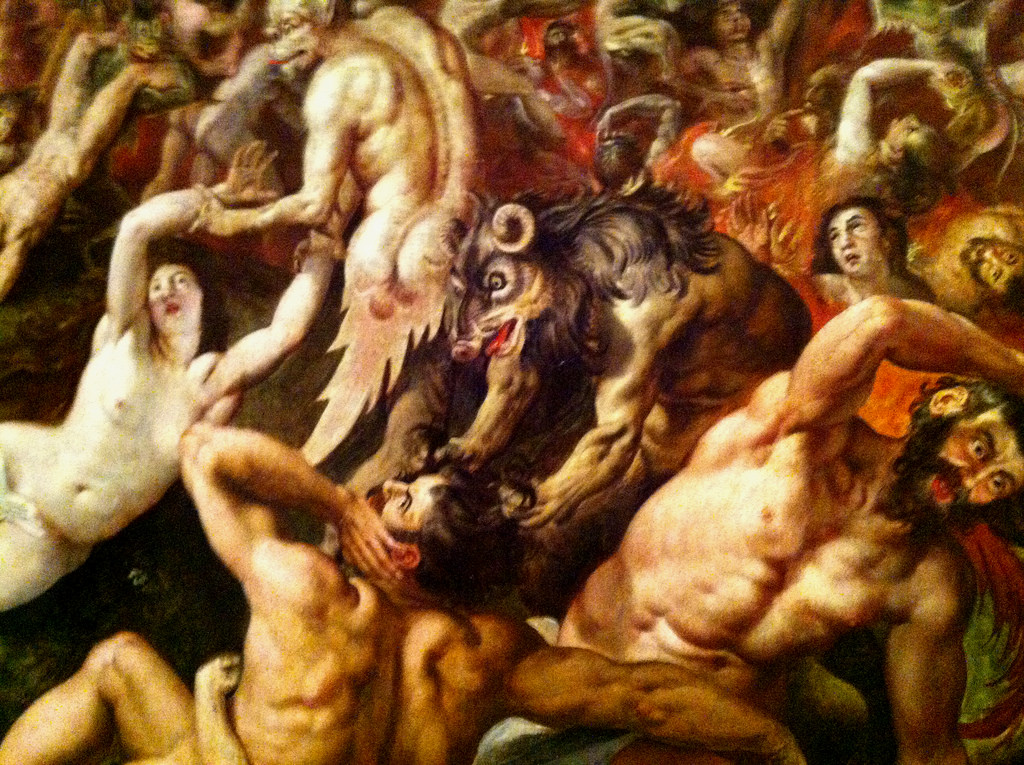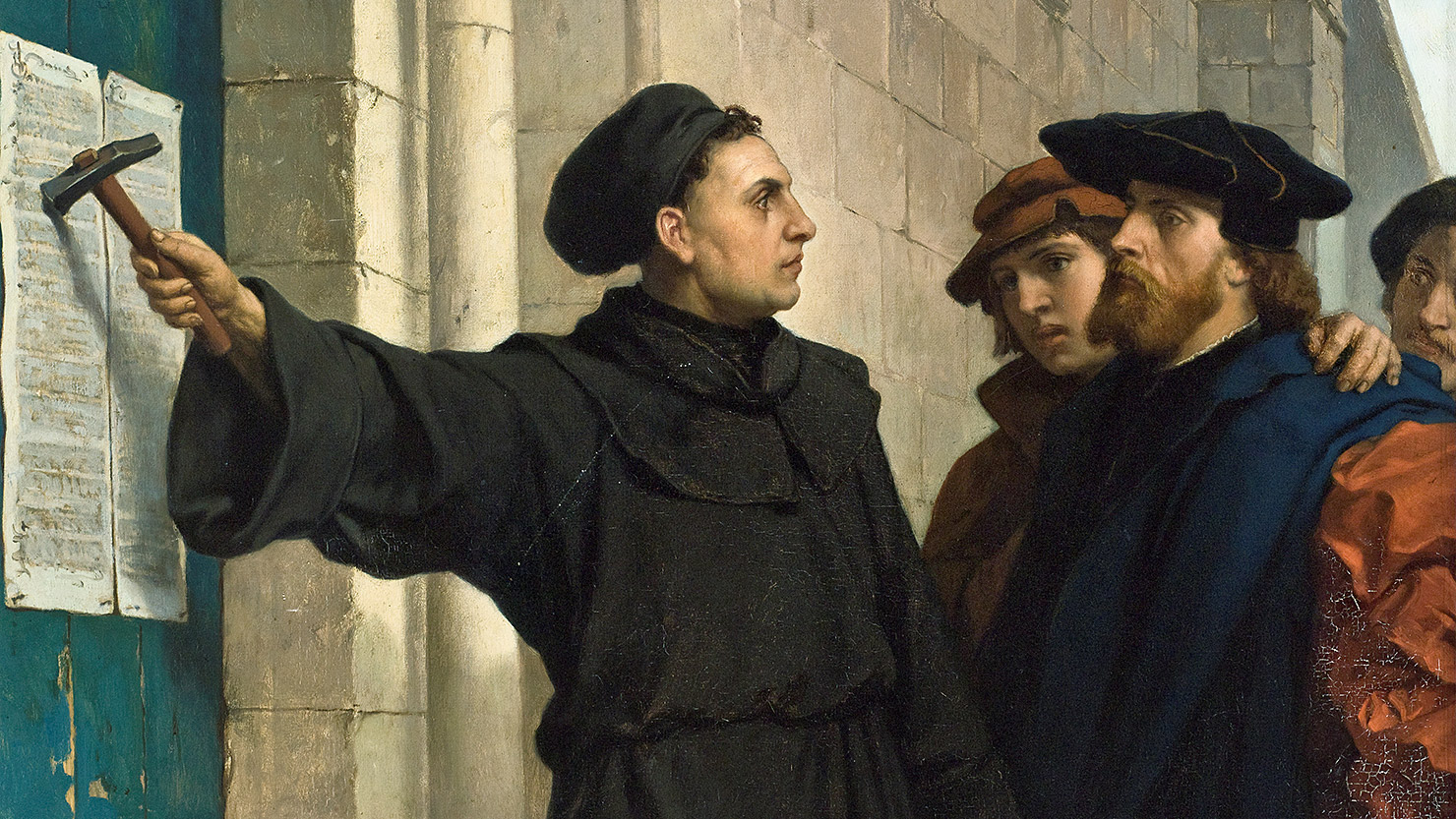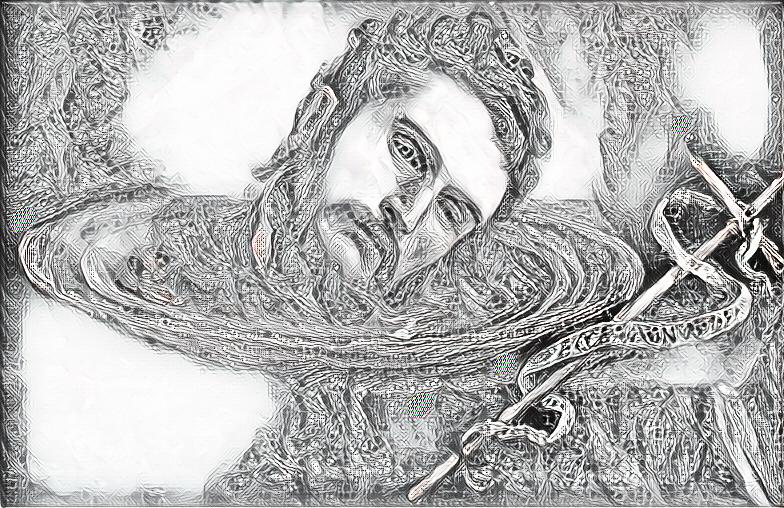The following is the first installment of a two-part series.
I. Introduction
The question of whether there is life after death, and what that life might be like, is probably one of religion’s oldest questions. Indeed, some conception or another has been in play since the beginning of recorded history, and probably before. Our modern technological and scientific worldview has not deterred a belief in life after death; the Baylor Surveys of Religion, conducted in 2005 and 2007, showed that 82% of Americans believed in the idea of “heaven,” and 73% believed in the idea of “hell.”[1]
Theologians and scholars from all disciplines have presented many possible views on afterlife beliefs and their meaning, and perhaps one of the most interesting is the view of psychoanalysis. In particular, Carl Jung sought to apply scientific observation and methods to religious experiences, psychical phenomena such as the appearance of ghosts and the work of mediums, and the “irrational” workings of the mind. While Jung’s theories are controversial to many, they may represent one of the only true attempts in early psychoanalysis to wed scientific views of the mind with experiences that did not easily lend themselves to reasonable testing and measurement.
For Jung, the idea of the underworld was a metaphorical representation of the collective unconscious, the depths that each individual must travel through in order to become a whole, or individuated, person.[2] The whole person, according to Jung, does not shun so-called “evil,” often associated with things “of the Earth” like sexuality, but finds a way to safely and meaningfully integrate these into his life.
Given later religious interpretations of the underworld as a place of punishment, one reflects on the fact that this was not always the case. Jake Stratton-Kent writes in his work on ancient Greek religion and magic, “Geosophia”:
The removal of the Underworld into the sky caused massive disruptions in categories of gods, angels, and other immortals, both celestial and chthonic. The resultant upheavals indifferently made objects of devotion into demons and restored lustre to those formerly despised. Just as the Gnostic demonisation of God and Angels typifies the one, so the rehabilitation of Typhon-Set, both in solar theology and in magic, typifies the other…The chthonic realm generally was the loser, despite the popularity of some of its major deities: for instance Dionysus and indeed Persephone. This was likely inevitable given the vertical distinctions already explicit in Plato’s model, and in the historical process of separating the chief deity from the material universe. This separation, which monotheistic theology occasionally considers its crowning accomplishment, is from another point of view one of the world’s greatest doctrinal disasters.[3]
In the ancient religions of the Near East, the underworld was originally a dreary place for all of the dead, regardless of merit. There were no concepts of eternal reward or punishment, no thoughts of immortality. Various shifts in religious and philosophical thought—as well as in wars, conquests, and the emergence of new religions—all played a role in the eventual separation of the righteous and un-righteous dead, and the belief in personal immortality and a life after death with God.
Afterlife beliefs are tied in with our fear of death, and notions of “heaven” and “hell” with our personal and social ethics, and these certainly represent the beginnings of soteriology in the religions of Western civilization. Not simply a religious phenomenon, this separating of righteous and unrighteous has roots in Western philosophy as well, particularly in Stoic and Platonic traditions.
This paper will look at that “split,” and examine the challenge raised by Jake Stratton-Kent when he calls it a “doctrinal disaster.” This paper has two parts. The first part looks at afterlife beliefs of ancient Near Eastern civilization—the Egyptians, the Babylonians, the Greeks, and the Jews, and traces the development of afterlife beliefs from a unified, “under-the-Earth in Hades” model to the later Hellenistic model that placed the afterlife in the sky, and separated the righteous and unrighteous, and will include the role of the shamanistic “goete” in archaic beliefs.
The second part looks at the psychological component of the issue, focusing particularly on Jung’s ideas of the collective unconscious and its relationship to afterlife mythology, which includes the idea that the whole person must acknowledge their strong and weak sides, and that a perfect God must represent the worst kind of suffering as well as ultimate bliss. The “split” nature of immortality and of God/Devil, whether it is one of many variables or the main consequence of rational and monotheistic ideas about death, has had a profound impact on the psychological state of modern society.
Examining all the relevant material could probably fill a book, or maybe several. In this paper, I am only introducing the question, and just scratching the surface of something that I believe deserves much larger consideration.
II. Part One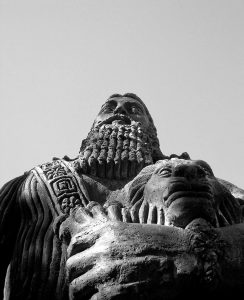
The oldest source we have on ancient afterlife beliefs is from the Babylonians, the Epic of Gilgamesh, estimated to have been written about 1750 BCE. After Gilgamesh, we don’t see writings until the 10th and 9th centuries BCE, with early Biblical literature and the epics of Homer. From these early sources, we see four prevalent themes in afterlife beliefs:
- The dead continue to exist as they did in human life, but in a much less energized form. Some possessed supernatural powers, like the gift of prophecy or the ability to curse the living.
- The dead exist under the earth in some kind of dark, cavernous world.
- These “shades” do not represent personal immortality—the dead are separate from God or the gods. Only kings and extraordinary heroes are potentially afforded a place among the gods.
- There is no punishment after death, save for the very wicked.
- One can communicate with the dead, or at least some vestige of the dead person, through the necromantic rituals of what Greeks called the “goete.”
The first of these beliefs is best represented by the original Greek idea of “psyche.” The original idea does not match our idea of the psyche as the “soul,” or “spirit.” Instead, the “psyche” seems to refer to life at the moment of death, or, as John Casey writes, “the breath of life”:
When a person dies, the psyche is the breath that has left the body. From the moment someone dies, the psyche becomes an eidolon, a phantom image ‘like the image in a mirror which can be seen, but not grasped.’ The psyche in its apparition as eidolon had special relation to dreams—the dead, through these images, come to the living in dreams.[4]
Casey also notes: “Throughout the Iliad we have warriors who are reduced to nothing as their soul flees to Hades. It is as though human greatness must include the sense of nothingness that awaits us, and that the hero have a clear sense of this nothingness.”[5]
In the Odyssey, Odysseus encounters his mother, and has this experience:
I bit my lip
rising perplexed, with longing to embrace her,
and tried three times, putting my arms around her,
but she went sifting through my hands, impalpable
as shadows are, and wavering like a dream.
Now this embittered all the pain I bore,
and I cried in the darkness:
O my mother,
will you not stay, be still, here in my arms,
may we not, in this place of Death, as well,
hold one another, touch with love, and taste
salt tears’ relief, the twinge of welling tears?
Or is this all hallucination, sent
against me by the iron queen, Persephone,
to make me groan again?
My noble mother
answered quickly:
O my child–alas
most sorely tried of men–great Zeus’s daughter,
Persephone, knits no illusion for you.
All mortals meet this judgment when they die.
No flesh and bone are here, none bound by sinew,
since the bright-hearted pyre consumed them down–
the white bones long exanimate–to ash;
dreamlike the soul flies, insubstantial.[6]
In early Israeli beliefs, there is the idea of “nefesh met.” The nefesh is the life energy of the person. The living person is referred to as nefesh hayyah, and is a “vital, psychophysical entity.”[7] The dead person is the nefesh met, the individual in the world of the dead. Simcha Paul Raphael explains: “After the energy to sustain life dissipated to an extreme, the individual claimed a place in Sheol where existence undeniably continued, but in a weakened, faded condition.”[8]
The beings in Sheol were called rephaim, which literally means “weak ones” or “powerless ones.” Rephaim also have an association with another biblical myth—they were thought to be a race of giants dwelling in the land of Canaan prior to the Conquest. They may even be equated with the nephilim, referred to in Genesis 6:4. Raphael explains,
Ancient Hebrew myth propounds that the original antediluvian race of giants, called at different times nephilim or rephaim, was destroyed by God and banished to the underworld. In the course of time, when this ancient myth had been gradually toned down, the name of rephaim was used as a designation of all the departed in the underworld.[9]
The similarities between this myth and that of Zeus throwing the Titans into the depths of Hades are striking.
In Babylonian beliefs, Casey explains that “Those who go there—all the dead—immediately become terrifying and malevolent ghosts, unless they are appeased by constant offerings at their tombs.”[10] This is similar to the ancient Roman belief in lemures and manes:
Lemures and manes are used only in the plural: these words stand for the vague conceptions formed of the shades of the dead who dwelt beneath the ground. These were a nameless crowd, hardly individualised, not distinguishable from the fleeting phantoms who fluttered about the tombs.[11]
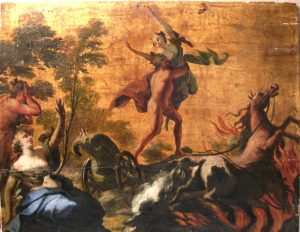 Not all shades had to be malevolent in all views, but certainly among Babylonians, Greeks, and Romans, the assumption was that the afterlife was miserable, and that the dead were angry about being dead. Many of the cults of the dead revolved around continual offerings to the dead ancestors, to keep them satisfied, and away from the realm of the living. To that end, the shaman, necromancer, or goete was employed to guide the dead to the afterlife, and to keep them from coming back and harming the living. More will be said about that later on.
Not all shades had to be malevolent in all views, but certainly among Babylonians, Greeks, and Romans, the assumption was that the afterlife was miserable, and that the dead were angry about being dead. Many of the cults of the dead revolved around continual offerings to the dead ancestors, to keep them satisfied, and away from the realm of the living. To that end, the shaman, necromancer, or goete was employed to guide the dead to the afterlife, and to keep them from coming back and harming the living. More will be said about that later on.
The second of these beliefs refers to the underworld, known as Hades to the Greeks, Inferni to the Romans, Sheol to the Hebrews, Duat to the Egyptians, and Aralu to the Babylonians. Franz Cumont suggests that the idea of the ongoing existence within the tomb extended to the idea that the dead must live in the Earth.[12] The ancient Mesopotamians believed that “the entrance to this netherworld is only a few feet below the surface of the Earth.”[13] In the Gilgamesh epic, Aralu is described as
the house whose residents are deprived of light, where soil is their sustenance and clay their food, where they are clad like birds in coats of feathers, and see no light, but dwell in darkness. On door and bolt the dust lay thick, on the house of dust was poured a deathly quiet.[14]
Alfred Jeremias tells us that the Babylonians also described the underworld as “kigal” meaning a vast underground dwelling, and “irsitum la tarat,” the far-off land. There were also associations with the desert as being the entrance to the underworld, hence the notion of dry, dusty earth.[15]
The Egyptians took great care to preserve their dead, who they believed lived on in the tomb, which was a pit or shaft sunk into the earth. The great preparations of food and other day-to-day needs were included in the tomb, where it was assumed the person continued a corporeal existence.[16] Similarly, the Romans had the idea of the “domus aeternitae,” the house of the dead, which was the tomb. It was expected that food and water be brought to the dead for sustenance, and that regular rituals be performed to appease them.[17]
The Jewish concept of Sheol dates back to the 12th century BCE. Just as the tribal family was the center of Jewish life, so it was also the center of death. The dead were buried in ancestral tombs, and it was believed they lived together under the earth, in a much less energized form.
The origins of the term are not clear; Raphael suggests that it could be related to the Hebrew root “shaal,” meaning “to ask,” and may refer to ancient practices of necromancy. Another possibility is the Hebrew word sho’al, meaning “a hollow hand”; “thus, Sheol is a hollow place beneath the ground.”[18] Neither is definitive, but give an idea of the original conception of Sheol as a place under the earth.
The Old Testament characterizes Sheol as “a land of dust” (Daniel 12:2), of disorder (Job 10:22), as having different divisions or chambers (Proverbs 7:27), provided with gates (Psalm 9:14 and 108:18), secured with bars (Job 17:16), and lastly, below the sea (Job 26:5) and without light (Job 10:21).[19]
The Odyssey describes the descent into Hades, with Hermes leading souls “down dank ways, over grey ocean tides, the snowy rock, past shores of dream and the narrows of the sunset, in swift flight to where the dead inhabit wastes of asphodel at the world’s end.”[20]
Casey describes the afterlife of Hades:
…there is a naked simplicity of grief that comes simply from these spirits being deprived of ‘honey-sweet life’ (thumos meliedes), the loss of which Anticleia, the dead mother of Odysseus, speaks (Odyssey, 11, 203) as she talks to her son, using the same word Teiresias employs to prophesy Odysseus’s own return (‘thy honey-sweet return’) to his homeland (Odyssey, 11, 100). The chief sorrow of death is expressed as the loss of light—reminiscent of the blankness of the underworld of the Sumerians and Babylonians, and the pit (Sheol) of Job—also in the words of Teiresias: ‘Why has thou left the light of the sun and come hither to behold the dead and a region where there is no joy?’ The flitting, gibbering, or faintly shrieking wraiths that Odysseus encounters in Hades enforce the sense that the shadowy survival after death is not an existence worth having. Although a few privileged souls might go to Elysium, the overwhelming majority will be eidola (phantasms).[21]
The third of these beliefs does not include a modern conception of immortality, or reward and punishment.
Thus, Samuel is found in Sheol after his death (1 Samuel 28:3ff), but it is not a realm of torture or punishment; it is simply the domain of the dead. The negative, punitive aspects that later characterized Sheol were almost completely lacking in its original conception. Therefore, rich and poor, kings and sinners (Job 3:11ff) all went to Sheol upon their death.[22]
Sheol is a realm of devitalized existence removed from God’s control. This conception eventually changed as the Hebrews moved from being a henotheistic tribe with Yahweh as their chief god, to being monotheistic, with Yahweh as their only god.[23]
In the Gilgamesh epic, Gilgamesh crosses the waters of death, and meets a female tavern-keeper who denies the possibility of immortality, telling Gilgamesh to cherish his life:
O, Gilgamesh, where are you wandering?
The life you seek you will never find:
when the gods created mankind
death they dispensed to mankind
life they kept for themselves.
But you, Gilgamesh, let your belly be full,
enjoy yourself always by day and by night![24]
In the Odyssey, Chapter 11, also known as the Nekuia, gives an account of necromancy, of Odysseus pouring the blood of a ram into a pit, that the dead may come forward to drink the blood and speak to him, the drinking of blood an apparent pre-condition for the dead to speak. He is looking for the shade of Tiresias the prophet, but many shades come forward. Odysseus learns not only of his own path home, which was the object of the necromantic divination, but also about the state of souls in the underworld.
Here, like other archaic sources, heroes and ordinary men alike are subject to the same fate. The only punishments specifically mentioned are those of Tityus, Tantalus and Sisyphus, who committed major crimes against the gods, suggesting that only crimes on such a superhuman scale were actually punished. However, the chapter also mentions the fate of Heracles:
Next I saw manifest the power of Heracles
a phantom, this, for he himself has gone
feasting amid the gods, reclining soft
with Hebe of the ravishing pale ankles
daughter of Zeus and Hera, shod in gold.
But, in my vision, all the dead around him
cried like affrighted birds; like Night itself
he loomed with naked bow and nocked arrow
and glances terrible as continual archery.[25]
This suggests that the true “spirit” of Heracles is now immortal, among the gods, but that a phantom shade, associated with the Greek word “psyche,” still remained in Hades. This suggests that the divine “spirit” of the person was separate from their “psyche,” and that one had the potential to be immortal, the other did not.
However, this did not seem to be a common belief about heroes in the afterlife. Heracles is a unique example, being more like a god than a human being. Common mortals were not united with the gods at death. Lars Albinus writes,
Nothing in the Nekuia implies on a general level that a person who might act in a certain way was entitled to look forward to a better fate in the afterlife, let alone that the enterprise of Heracles represented a model for imitation. Quite the contrary: the Homeric mythologem of Heracles represented an exceptional fate as regards the afterlife, an exception which proves the rule, since even as an exception it was represented in a way that only underlined the Olympian and Panhellenic dimension of the epics.[26]
Cumont writes of the ancient Greeks and Romans:
Originally, no idea of retribution was attached to this descent of the dead into the infernal regions; it was neither their merits nor demerits which determined their condition. On the contrary, the inequalities of human society were perpetuated: a nobleman kept a higher rank than that of his servants; each man in some sort continued his occupations, even preserved his tastes and passions.[27]
Lars Albinus mentions the distinction between Elusion (the Isles of the Blessed) and Tartarus (the realm of punishment), mentioned in the 4th and 6th chapters of the Odyssey.
Elusion is confined to the borders of the world similar to the house of Hades. Thus, the eschatological significance of Elusion is associated, on the one hand, with Hades through its topography as well as through the brotherhood of the Cretan kings, and, on the other hand, with Olympus through the conspicuous and parallel exceptions of Heracles and Menelaus. Yet the intervention of Zeus is at work in these cases of exception. Not the Cretan judges, let alone Cronus, but mighty Zeus is the one in command, and while it appears the distinction between the Olympian sphere and the chthonic sphere equals the distance between Elusion and Tartarus, it is also clear Olympus opposes, at the same time, the distant location of this duality.[28]
Sarah Iles Johnston notes:
In our earliest Greek narrations about the afterlife, taken from Homer and other epic poems, only the very bad (those who have committed crimes against the gods, such as Tantalus and Tityus) are punished and only the very privileged (those who are related to the gods by birth or marriage, such as Achilles and Menelaus) enjoy bliss. The vast majority of people simply languish away in Hades, neither suffering any particular distress nor enjoying any particular pleasure.[29]
This is similar to the Egyptian conception of the afterlife. The Egyptians always had a strong concept of an afterlife, and a concept of reward and punishment. However, immortality was reserved only for the pharaoh. Casey explains:
The pyramids themselves and all the funerary rituals, prayers, and spells were intended to assist the god-king of Egypt to ascend into the heavens from whence he will look down and protect his realm. The texts specifically exclude the common people–almost as though the pharaoh needs to have his dignity protected from them: ‘Nut has commanded the King to Atum, he open-armed has commanded the king to Shu, that he may cause yonder doors of the sky to be opened for the King, barring (ordinary) folk who have no name. Grasp the King by his hand and take the King to the sky, that he may not die on earth among men.’[30]
and similarly:
‘Oh King; receive your head, collect your bones, gather your limbs together, throw off the earth from your flesh…stand at the doors which keep out the plebs’ (utterance 373). It has been suggested that after the tumultuous times of the First Intermediate period in Egyptian history, during which pharaohs were overthrown, belief in their divinity was shaken, and that there was a gradual democratization of hopes for the future life. What the Pyramid Texts had done for royalty, the Coffin Texts (coffins contained scrolls of spells and prayers) and then the Book of the Dead began to do for commoners.[31]
Egyptian ideas of immortality are much more developed than their Greek, Sumerian, and Jewish neighbors. The First Intermediate Period referred to by Casey is between the 22nd and 21st century BCE, almost a thousand years before other Near Eastern cultures had developed such a concept.
In general, the Near East believed that the gods were in the sky, the underworld was under the earth or the sea, and the latter was not in control of the former. There is no war between the two factions, there is not an overall concept of divine reward or punishment for the masses. The pharaoh would be judged in the realm of Osiris, his conduct weighed against the standard of righteousness by Osiris himself, and would determine the pharaoh’s afterlife state.[32]
Mark Smith writes, “The ancient Egyptian conception of the human being was monistic. They did not see in the individual a composite made up of a corruptible body and an immortal soul. For them, any hope for survival after death had to involve the whole entity.”[33] This may explain the early belief that only the pharaoh attained immortality, as the pharaoh would represent the people as a whole. This is also similar to Israelite eschatology, which looks at the fate of the nation of Israel rather than the fate of individual souls.
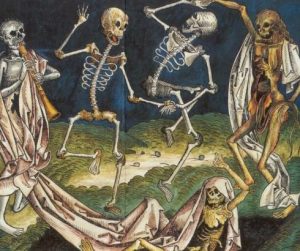 With regards to the fifth belief in necromancy, we find reference to this practice in archaic Greek literature with the term “goes.” There is some disagreement as to where the term goes comes from. It does not appear in Greek literature until the 7th century, though it is likely related to earlier practices. There was a term in ancient Greek, goos, which referred to women who lamented at funerals.
With regards to the fifth belief in necromancy, we find reference to this practice in archaic Greek literature with the term “goes.” There is some disagreement as to where the term goes comes from. It does not appear in Greek literature until the 7th century, though it is likely related to earlier practices. There was a term in ancient Greek, goos, which referred to women who lamented at funerals.
However, as Sarah Iles Johnston notes, the term goes is a masculine term, which seemed to be associated with a specific person whose job was to deal with the dead. Jake Stratton-Kent believes that there is a relationship between the goos and the goes, as the art of both involved singing or howling as part of the ritual.
In Greece, the goes were originally associated with the Dactyls, a race of metallurgists that were considered to be magical, and might resemble modern conceptions of dwarves. The Dactyls were from Crete, one of the places associated with Dionysus, and like him, were associated with foreigners and foreign things. Goetic and initiatory practices were both associated with the Dactyls, who are also considered to be the inspiration for many of the mystery cults that sprang up in Greece and surrounding areas.
It is interesting to note another “foreigner” responsible for creating initiatory rituals, namely Orpheus. The association of the “secret” mysteries that dealt with attaining immortality in the underworld, and the practice of raising the dead and sending them away is also worth noting. Stratton-Kent mentions that the foreignness of the deities is really a non-factor, as they are still inherently Greek. “The demonisation of the chthonic has comparatively little to do with matters of ethnicity; on the contrary, foreign-ness is simply a common attribute of the demonic.”[34]
Sarah Iles Johnston believes that the goetes were an integral part of society, and that their work was needed when individuals, and sometimes governments, were in trouble, supposedly due to the influence of the angry dead. But, she notes, “Whatever he might call himself, there is little reason to think that the goes was despised by the general populace: only members of the elite intellectual class like Plato looked down their noses at him.”[35]
On this idea, Stratton-Kent notes the differences between “Olympian” and “chthonic” rituals:
Celestial deities are invoked in daylight, in a state of purity and cleanliness, often wearing white; the occasion is joyful, the altar is raised up, and the sacrificial victims look towards the heavens at the moment of sacrifice. The dead on the other hand were honoured with lamentations…these ceremonies were generally nocturnal, as were the Hittite equivalents. The garments of the mourners were torn and defiled with dirt, their hair hung loose and in disarray. No altar was erected for the dead, rather a pit was dug, into which the sacrificial beast looked down.[36]
However, these were not so exclusive—there were sanctuaries and rites that incorporated the elements of both types of deities.
There are many taboos surrounding the dead, and ancient Greece was no exception to this rule. Anyone who dealt directly with the dead, especially with calming the angry dead, was perceived to have a lot of power. It is difficult to say whether they were poverty-stricken, though it’s very likely they lived on the outside of society, as their trade was “foreign,” by definition. While Johnston is skeptical about the link between the goes and shamanism, I think it is arguable that the work of the goes was an outgrowth of the work of the shaman—both worked with “a foot in both worlds,” and it is likely that they were revered and feared at the same time.
Necromancy and other forms of divination involving the dead were quite common in the archaic period. Even in the Bible, we see many condemning references, as it was one of the practices the ancient Israelites had trouble giving up. The most notable biblical example is Saul’s request of the Witch of Endor to bring back the shade of Samuel, in the first book of Samuel, Chapter 28.
It was never explicitly condemned in the Near Eastern world until Christianity gained influence, though the practice still continued throughout European history. The archaic Israelites kept and believed in something called “teraphim,” which roughly translates to household idols. Raphael writes:
There is certainly indication that the teraphim were actual images of the dead ancestors used as oracular devices when consulting the deceased. There is certainly indication that the teraphim were used for some sort of divinatory purposes. According to the medieval biblical commentator Nahmanides, the teraphim were used to gain knowledge of future events. This is inferred in both Judges 17:5 and Hosea 3:4, which mention the teraphim along with the ephod, a known ancient divinatory device…While these activities and ritual objects were not sanctioned by the prophets, they persisted as cultic remnants of early Israelite religion.[37]
While Egypt’s beliefs about the afterlife changed much earlier, the rest of the Near East saw a transformation in beliefs around the 6th and 5th centuries BCE. The idea of an afterlife with rewards and punishments, and the idea that one’s actions in life could influence the results of their afterlife, began to take shape, and the role of the goes went into a steady decline, and eventual demonization. A number of historical variables may have been the catalyst for the change in belief. What follows are some of the potential variables that may have influenced this shift in thinking about the afterlife.
Brigid Burke (D.Litt.) is an adjunct professor of Mythology in the Classics and General Humanities department of Montclair State University (Montclair, New Jersey, United States). Her research and writing explores the link between death beliefs in Western culture and our collective psychology of good and evil, and masculine and feminine.
[1] Rodney Stark, What Americans Really Believe: New Findings from the Baylor Surveys of Religion, (Waco, Tex.: Baylor University Press, 2008), 73.
[2] Carl G. Jung, Collected Works Trans. Hull, R.F.C. Bollingen, Series. 22 vols. (New York: Pantheon Books, 1953), 449.
[3] Jake Stratton-Kent, Geosophia: The Argo of Magic. Vol. 1. 2 vols. (London: Scarlet Imprint, 2010), 177.
[4] John Casey, After Lives: A Guide to Heaven, Hell, and Purgatory, (Oxford: Oxford University Press, 2009), 69.
[5] Ibid., 71.
[6] Homer, The Odyssey, Trans. Fitzgerald, Robert, (Garden City: Anchor Books, 1963), 191-192, lines 175-199.
[7] Simcha Paull Raphael, Jewish Views of the Afterlife, 2nd ed., (Lanham: Rowman & Littlefield, 2009), 56.
[8] Ibid., 57.
[9] Ibid., 55.
[10] John Casey, After Lives: A Guide to Heaven, Hell, and Purgatory, (Oxford: Oxford University Press, 2009), 45.
[11] Franz Cumont, After Life in Roman Paganism: Lectures Delivered at Yale University on the Silliman Foundation, (New Haven: Yale University Press, 1922), 72.
[12] Ibid., 70.
[13] John Casey, After Lives: A Guide to Heaven, Hell, and Purgatory, (Oxford: Oxford University Press, 2009), 44.
[14] Ibid., 49.
[15] Alfred Jeremias, The Babylonian Conception of Heaven and Hell, Trans. J. Hutchinson, (London: David Nutt, 1902), 18-19.
[16] Mark Smith, Traversing Eternity: Texts for the Afterlife from Ptolemaic and Roman Egypt. (Oxford: Oxford University Press, 2009), 1.
[17] Franz Cumont, After Life in Roman Paganism: Lectures Delivered at Yale University on the Silliman Foundation, (New Haven: Yale University Press, 1922), 50-51.
[18] Simcha Paull Raphael, Jewish Views of the Afterlife, 2nd ed., (Lanham: Rowman & Littlefield, 2009), 52.
[19] Ibid., 53.
[20] Homer, The Odyssey, Trans. Fitzgerald, Robert, (Garden City: Anchor Books, 1963), Ch. 24, lines 11-15, Robert Fitzgerald translation.
[21] John Casey, After Lives: A Guide to Heaven, Hell, and Purgatory, (Oxford: Oxford University Press, 2009), 68-69. Emphasis his.
[22] Simcha Paull Raphael, Jewish Views of the Afterlife, 2nd ed., (Lanham: Rowman & Littlefield, 2009), 53.
[23] Ibid., 57.
[24] John Casey, After Lives: A Guide to Heaven, Hell, and Purgatory, (Oxford: Oxford University Press, 2009), 50.
[25] Homer, The Odyssey, Trans. Fitzgerald, Robert, (Garden City: Anchor Books, 1963), 205, lines 572-580.
[26] Lars Albinus, House of Hades: Studies in Ancient Greek Eschatology, (Aarhus: Aarhus University Press, 2000), 81-82.
[27] Franz Cumont, After Life in Roman Paganism: Lectures Delivered at Yale University on the Silliman Foundation, (New Haven: Yale University Press, 1922), 72.
[28] Lars Albinus, House of Hades: Studies in Ancient Greek Eschatology, (Aarhus: Aarhus University Press, 2000), 89.
[29] Fritz Graf, Ritual Texts for the Afterlife: Orpheus and the Bacchic Gold Tablets, (London: Routledge, 2007); Sarah Iles Johnston, Restless Dead: Encounters between the Living and the Dead in Ancient Greece, (Berkeley: University of California Press, 1999), 106.
[30] John Casey, After Lives: A Guide to Heaven, Hell, and Purgatory, (Oxford: Oxford University Press, 2009), 248. (utterance 361).
[31] John Casey, After Lives: A Guide to Heaven, Hell, and Purgatory, (Oxford: Oxford University Press, 2009), 248.
[32] Mark Smith, Traversing Eternity: Texts for the Afterlife from Ptolemaic and Roman Egypt. (Oxford: Oxford University Press, 2009), 2.
[33] Ibid., 3.
[34] Jake Stratton-Kent, Geosophia: The Argo of Magic. Vol. 1. 2 vols. (London: Scarlet Imprint, 2010), vii.
[35] Sarah Iles Johnston, Restless Dead: Encounters between the Living and the Dead in Ancient Greece, (Berkeley: University of California Press, 1999), 120.
[36] Jake Stratton-Kent, Geosophia: The Argo of Magic. Vol. 1. 2 vols. (London: Scarlet Imprint, 2010), viii.
[37] Simcha Paull Raphael, Jewish Views of the Afterlife, 2nd ed., (Lanham: Rowman & Littlefield, 2009), 50.
